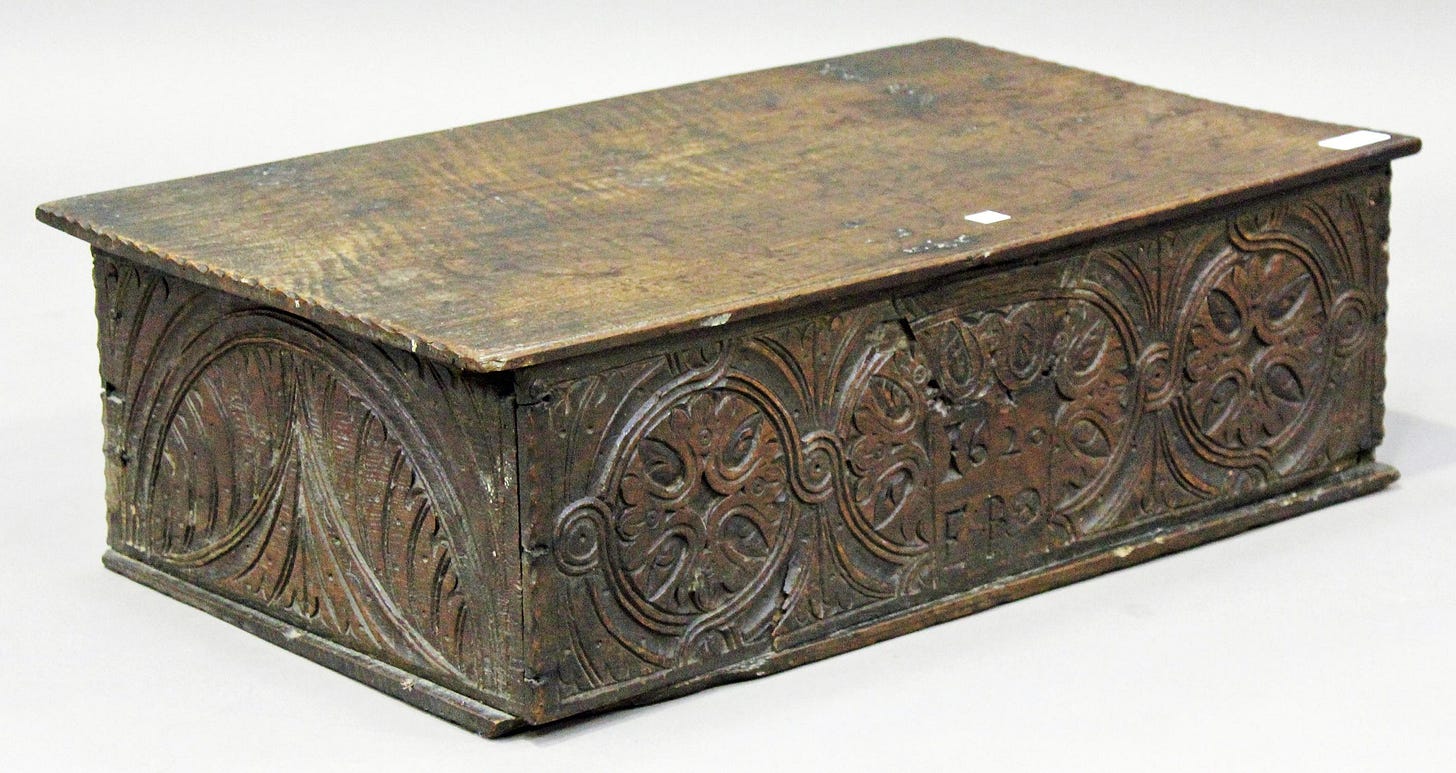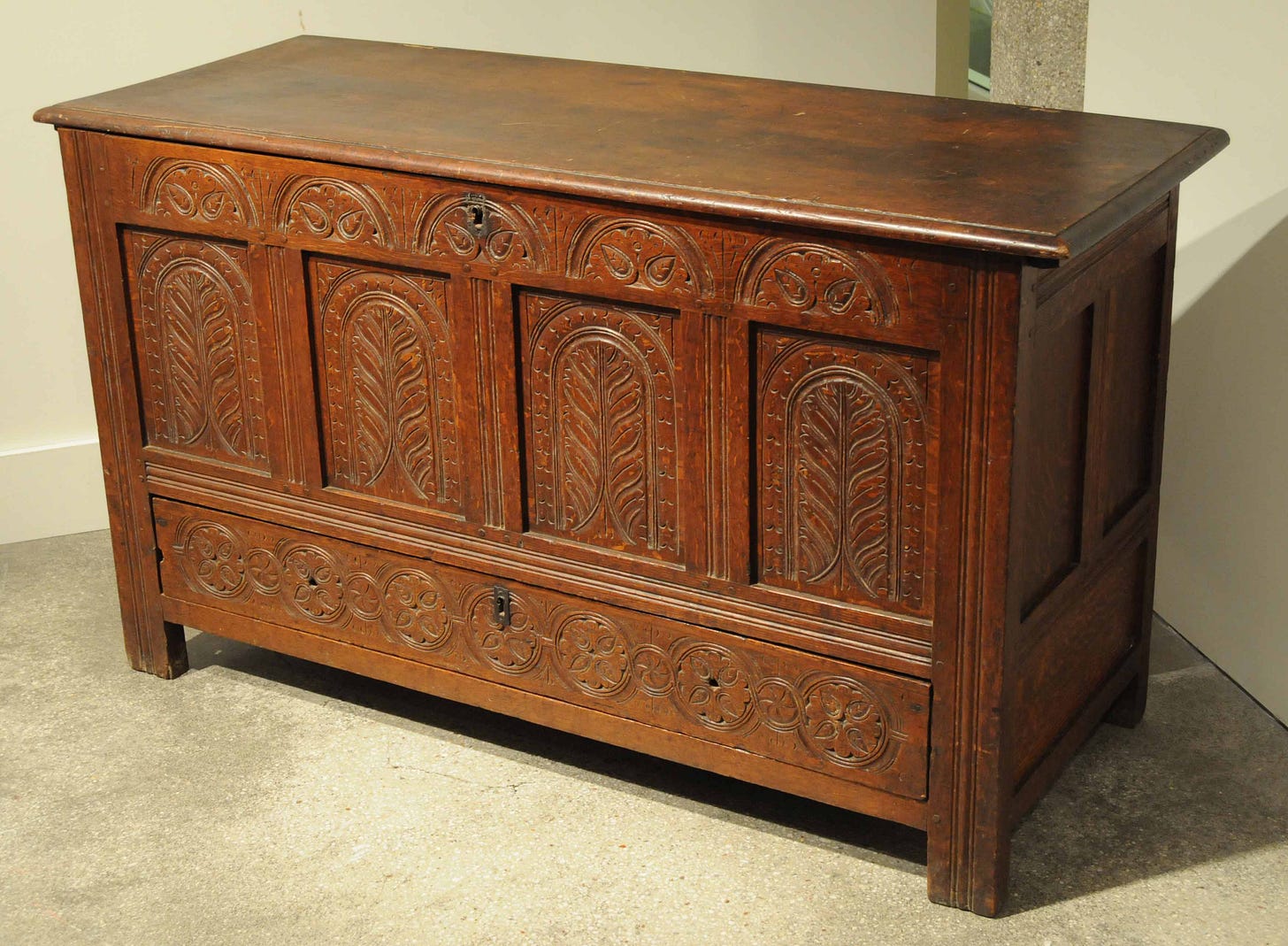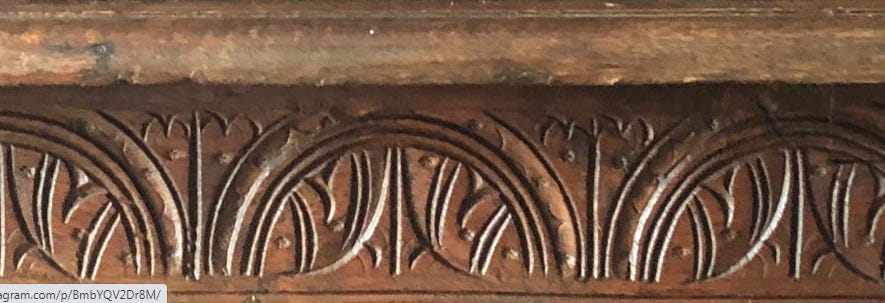35 years I’ve been waiting for this photo to come along. I’ll back up, there’s a lot of excruciating details coming. It begins with my long-held fixation on the 17th-century carved works attributed to William Savell and his sons John & William of Braintree, Massachusetts. If you’ve seen the posts on those chests and boxes then you have an inkling of how much time I’ve spent obsessing over them. One thing about the chests - there’s very little variation in them. Same carving across every top rail. Same carving in every panel. Same carving in every drawer front.
Different execution to a slight degree, but clearly the same layout/design and so on. Jennie Alexander and I, (& Bob Trent, who was there every step of the way as well) felt that there must be English examples tucked away somewhere that would exhibit the same format/design - “they didn’t conceive these designs on the boat...” we used to say.
But we’ve never found an example. Asked every furniture historian/scholar/student of English oak furniture. Haunted dealers of antiques, auction houses, historical societies, etc. I got close once or twice. First was this box, posted many, many years ago (2005) online.
No details, it’s supposed to be English. No dimensions, no provenance, nothing. I was suspicious of it - it looked so bright and new. And the handling of the pattern didn’t really match up with the Savell drawer fronts that use the same design. Close, but different enough in its details that I wasn’t sold on it.
A ganged-up photo posted on Hadden Antiques’ Instagram page caught my eye one time. It was a stack of things with lunette carvings, several different “takes” on the motif. I cropped it to zero in on the one I wanted.
I was (and still am) sure this relates to the side carvings on two Savell boxes we know.
Keep reading with a 7-day free trial
Subscribe to Follansbee's Substack to keep reading this post and get 7 days of free access to the full post archives.







